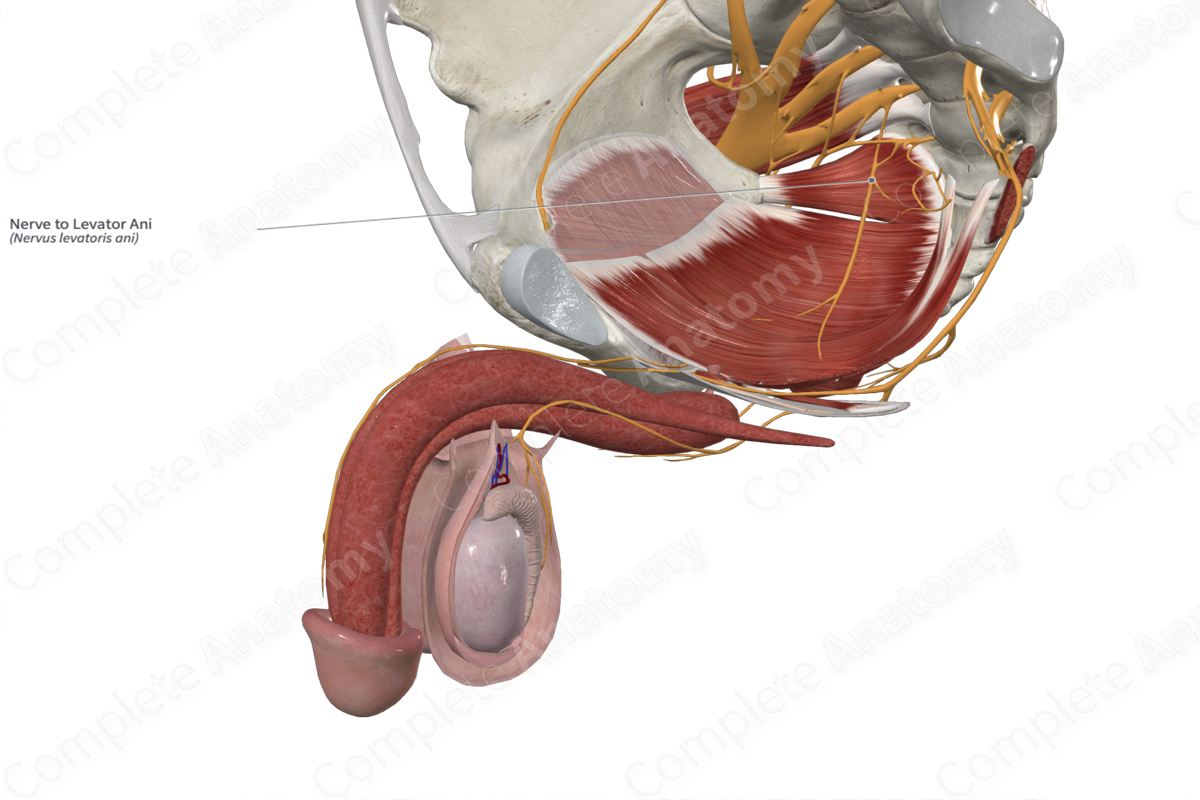
Quick Facts
Origin: From the anterior rami of the nerves third to fourth sacral nerves (S3—S4).
Course: The somatic efferent neurons from anterior rami of S3-S4 extend directly from the sacral plexus to the levator ani muscle.
Branches: None.
Supply: iliococcygeus, pubococcygeus, and puborectalis parts of the levator ani muscle, as well as the coccygeus muscle.
Related parts of the anatomy
Origin
The levator ani muscle has a dual innervation (Standring, 2016). It receives input from the nerve to the levator ani muscle (S3—S4; major contribution) and from the inferior anal branch of the pudendal nerve (minor contribution) (Wallner et al., 2008).
Course
The nerve to levator ani muscle extends directly from the sacral plexus to the levator ani muscle.
Branches
There are no named branches.
Supplied Structures
The nerve to levator ani muscle provides motor innervation to iliococcygeus, pubococcygeus, and puborectalis parts of the levator ani muscle, as well as the coccygeus muscle.
List of Clinical Correlates
—Uterine prolapse
—Pelvic floor disorders
—Incontinence
References
Standring, S. (2016) Gray's Anatomy: The Anatomical Basis of Clinical Practice. Gray's Anatomy Series 41st edn.: Elsevier Limited.
Wallner, C., van Wissen, J., Maas, C. P., Dabhoiwala, N. F., DeRuiter, M. C. and Lamers, W. H. (2008) 'The contribution of the levator ani nerve and the pudendal nerve to the innervation of the levator ani muscles; a study in human fetuses', Eur Urol, 54(5), pp. 1136-42.
Learn more about this topic from other Elsevier products





